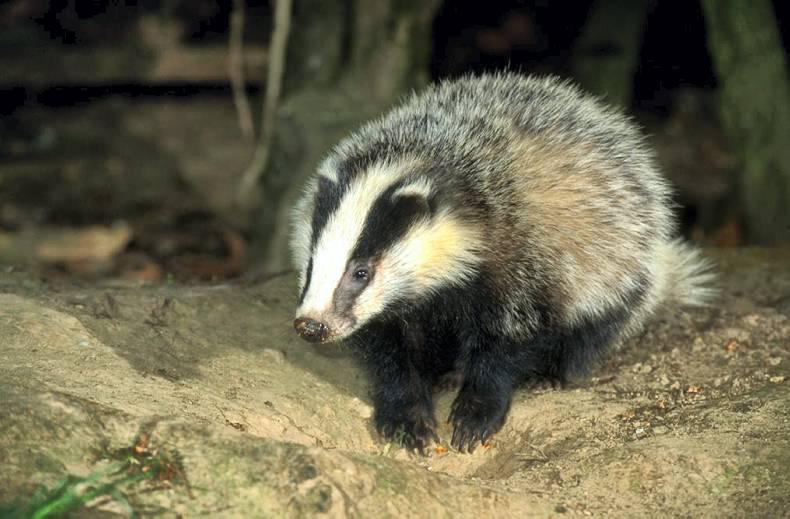Speaking at the World Buiatrics Congress in Dublin on Monday 4 July, James O'Keeffe, head of the wildlife unit at the Department of Agriculture, said the current badger vaccination programme is due to finish in 2017.
The Department is currently trialling a vaccination programme for badgers using the human Bacillus Calmette-Guérin (BCG) vaccination for tuberculosis.
The aim, as former Minister for Agriculture Simon Coveney said last year, is to move away from culling badgers and vaccinate them against TB instead.
Although it is still not clear how exactly TB transmits between cattle and badgers, incidences of TB in cattle have declined in tandem with a targeted culling of the badger population that began in 2002.
Since then badger density has reduced from around 2 badgers per square kilometre to half a badger per square kilometre. Meanwhile, reactor numbers have fallen from approximately 45,000 animals in 1999 to 15,317 in 2015.
O'Keeffe says the trial vaccination programme for badgers, which started in some areas as far back as 2011, is going well so far. "We want to see if we can replace culling, or a large amount of the culling we do, with vaccination. We'll finish the trial at the end of 2017, but it's going well so far."
Reducing potential for contact
Dr Margaret Good, veterinary head of the TB eradication programme in the Department of Agriculture, adds that culling has been very successful in terms of reducing the potential for contact between badgers and badgers and badgers and cattle.
Based on a conservative estimate we have reduced TB in badgers by 50% since the early 2000s
"Unlike cattle, we don't take infected badgers out of the population so reducing the population means we reduce the potential for contact with infected badgers," says Good. "Based on a conservative estimate we have reduced TB in badgers by 50% since the early 2000s."
As for the vaccination trial, Good says the Department is comparing two areas, an area where badgers have previously been culled and are now vaccinated, and an area where culling will be maintained.
"We're going to let the population build up in the area where the vaccination is to see if the rates of TB get any worse in that area," she explains. "And if they're not worse than the culling area then we can replace culling with a vaccination."
Good adds that the most likely scenario for the badger vaccination programme, the first of its kind to be trialled in Europe, will be to use a mix of both injectible vaccine and oral vaccine.
"They may both play a role," she says. "Not all badgers will eat the bait, and we won't catch everything in order to inject them so I would say it will be a combination of the two. Perhaps we'll do both in areas where we've had high rates of TB, and in areas where we have lower TB rates among badgers we could just deliver the oral vaccine."
Listen to Dr Good discuss the badger vaccination trial, the interferon gamma test and reactor removal times below
Deer TB eradication programme under discussion
Good acknowledges that TB in deer is also an issue, especially in Co Wicklow, where TB levels in badgers and cattle are also very high.
A pilot survey carried out by the Department of Agriculture in 2015 revealed that 16% of deer in Co Wicklow were found to be carrying TB.
It will probably take about two years from the time we start it. I would hope we start it sooner rather than later
Good says that levels of TB in deer in Wicklow are "very high" but she does not envisage a programme to reduce the density of deer in Co Wicklow emerging for a while yet.
"The Department and the National Parks and Wildlife Service are looking at the possibility of using licenced hunters for reducing the deer density in those hotspot areas. We might also do some extra work on gland examination, because TB concentrates in various different glands.
"But this is very much in the discussion stage," Good adds. "We have to decide how we will organise it, who will finance it, who will do the work because this is not work that is being done by anyone yet. It will probably take about two years to do from the time when we start it. I would hope we start it sooner rather than later."
The bTB eradication programme started in Ireland in 1950 and became compulsory in 1957. In 1965 the authorities were confident TB could be eradicated from Irish cattle herds by 1969.
However, the goalposts have moved quite considerably since that time and we are now looking at a target of eradication by 2030.
Good is "quietly confident" that Ireland can make this target.
"I am quietly confident we can make that target," she says. "But I think we would need to continue a vaccine programme in badgers longer than that because if we leave any behind, it will come back. And we don't want that to happen."
TB fears remain in blackspot counties
Coveney - Results of Wicklow survey do not suggest TB in deer is nationwide
TB to be eradicated by 2030 - Coveney






 This is a subscriber-only article
This is a subscriber-only article











SHARING OPTIONS: